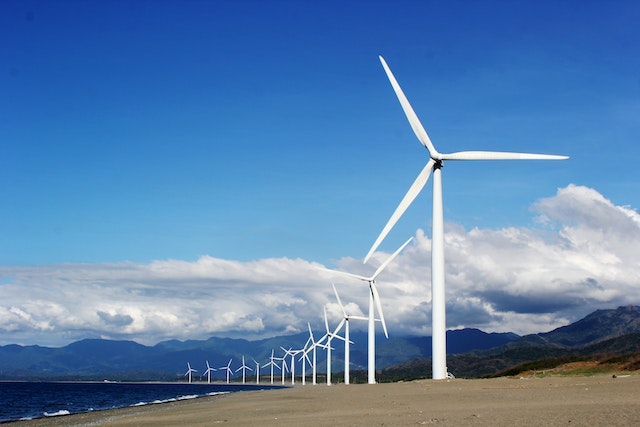How Wind Power Is Transforming Steel Manufacturing

The challenge of reducing the world’s carbon footprint has led to a new way of thinking about steel production — researchers are now exploring numerous initiatives to reduce the environmental impact of this industry.
We are experiencing an exciting time for all involved in the steel sector now. As a result, we are also seeing an increase in studies around the globe on sustainable steel manufacturing.
This is excellent news for both consumers and producers alike, as it means that we will see more affordable steel products with lower carbon footprints being offered to us all.
The Steel Industry & Emissions
The steel industry is one of the world’s largest electricity consumers, accounting for around 2% of global energy consumption.
Steel production also generates significant emissions as a by-product of the process; these include carbon dioxide, nitrogen oxides and sulphur dioxide. It is estimated that the industry emits roughly 1-2% of all man-made CO2 emissions each year.
Steel Plants Turning to Wind Power to Keep Up with The Times
Several innovative techniques are being developed and tested in steel plants worldwide, with wind energy at the forefront. In recent years, the steel industry has come under increasing pressure to reduce its carbon footprint. In response, many steel producers have turned to decarbonisation techniques such as wind power to help reduce their reliance on fossil fuels.
The use of wind power in steel plants is not new, though. In fact, the first-ever wind-powered blast furnace was built in Sweden back in 1902. The technology has since been developed and refined over the years, and today it is used extensively to generate electricity on a global scale.
Benefits and Economic Issues
Though the potential for the steel industry to replace fossil fuels is great, there are barriers to its adoption as an alternative energy source.
The main barrier to adopting an alternative energy source is monetary. Switching over would require a large investment in infrastructure.
Steel also has limited uses in other areas besides construction and manufacturing; other industries may not be able to justify the investment if it does not save them money or make them more efficient.
The Future of Steel
There are many other ways in which steel production can become more sustainable over time without sacrificing quality or performance; however, much research still needs to be done before these methods can be implemented on a large-scale basis.
We all agree that steel is a vital resource, and we need to find more sustainable ways to produce it.
Hopefully, these research projects can lead to better technology in the future.
ShapeCUT’s Structure for More Sustainable Steel
At ShapeCUT we’ve implemented our own green policies, which have increased productivity and decreased environmental impact.
We’re proud to say that in our Brisbane facility, one of the largest private steel profiling cutting operations in the southern hemisphere, most of the daily operation is powered by solar energy.
ShapeCUT profiling cutters are all about precision, reliability, speed energy efficient practices. With more than 25 years of experience, we have the skill, steel stock, and huge range of machines to get the job done.
Our commitment to quality processes and more sustainable systems ensures we can deliver a quality result every time. Call our team on 1800 ShapeCUT today.
Contact Us To Find Out More
We ensure a fast, exact and economical steel solution for our clients. Call our team today to discuss your steel cutting and metal processing requirements.
Get Our Newsletter
Contact details
121 Mica Street, Carole Park,
QLD, 4300, AUSTRALIA
Freecall: 1800 SHAPECUT (1800 742 732)
Telephone: (07) 3271 5600
Facsimile: (07) 3271 5454
Email: sales@shapecut.com.au
Accredited Profile Cutting

Profile Cutting
©2023 ShapeCut | Website design Brisbane by iFactory | Privacy Policy | Search | Sitemap



